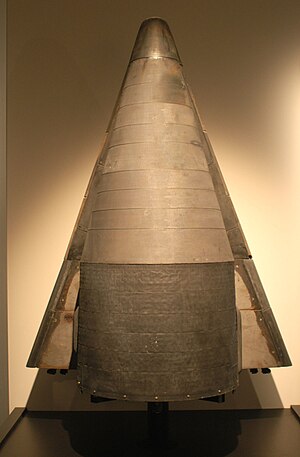ASSET (spacecraft)
| ASSET | |
|---|---|
 |
|
| Preserved ASSET vehicle at USAF Museum, Dayton, Ohio | |
| Role | Spaceplane research — never flew beyond Earth's atmosphere |
| Manufacturer | McDonnell Aircraft |
| First flight | September 18, 1963 |
| Status | Museum piece |
| Primary user | United States Air Force |
| Number built | 6 |
| Developed from | Boeing X-20 Dyna-Soar |
| Variants | Winged Gemini |
ASSET, or Aerothermodynamic Elastic Structural Systems Environmental Tests was an experimental US space project involving the testing of an unmanned sub-scale reentry vehicle.
Begun in 1960, ASSET was originally designed to verify the superalloy heat shield of the X-20 Dyna-Soar prior to full-scale manned flights. The vehicle's biconic shape and low delta wing were intended to represent Dyna-Soar's forward nose section, where the aerodynamic heating would be the most intense; in excess of an estimated 2200 °C (4,000 °F) at the nose cap. Following the X-20 program's cancellation in December 1963, completed ASSET vehicles were used in reentry heating and structural investigations with hopes that data gathered would be useful for the development of future space vehicles, such as the Space Shuttle.
Built by McDonnell, each vehicle was launched on a suborbital trajectory from Cape Canaveral's Pad 17B at speeds of up to 6,000 m/s before making a water landing in the South Atlantic near Ascension Island. Originally, a Scout launch vehicle had been planned for the tests, but this was changed after a large surplus of Thor and Thor-Delta missiles (returned from deployment in the United Kingdom) became available.
Of the six vehicles built, only one was successfully recovered and is currently on display at the National Museum of the United States Air Force in Dayton, Ohio.
...
Wikipedia
